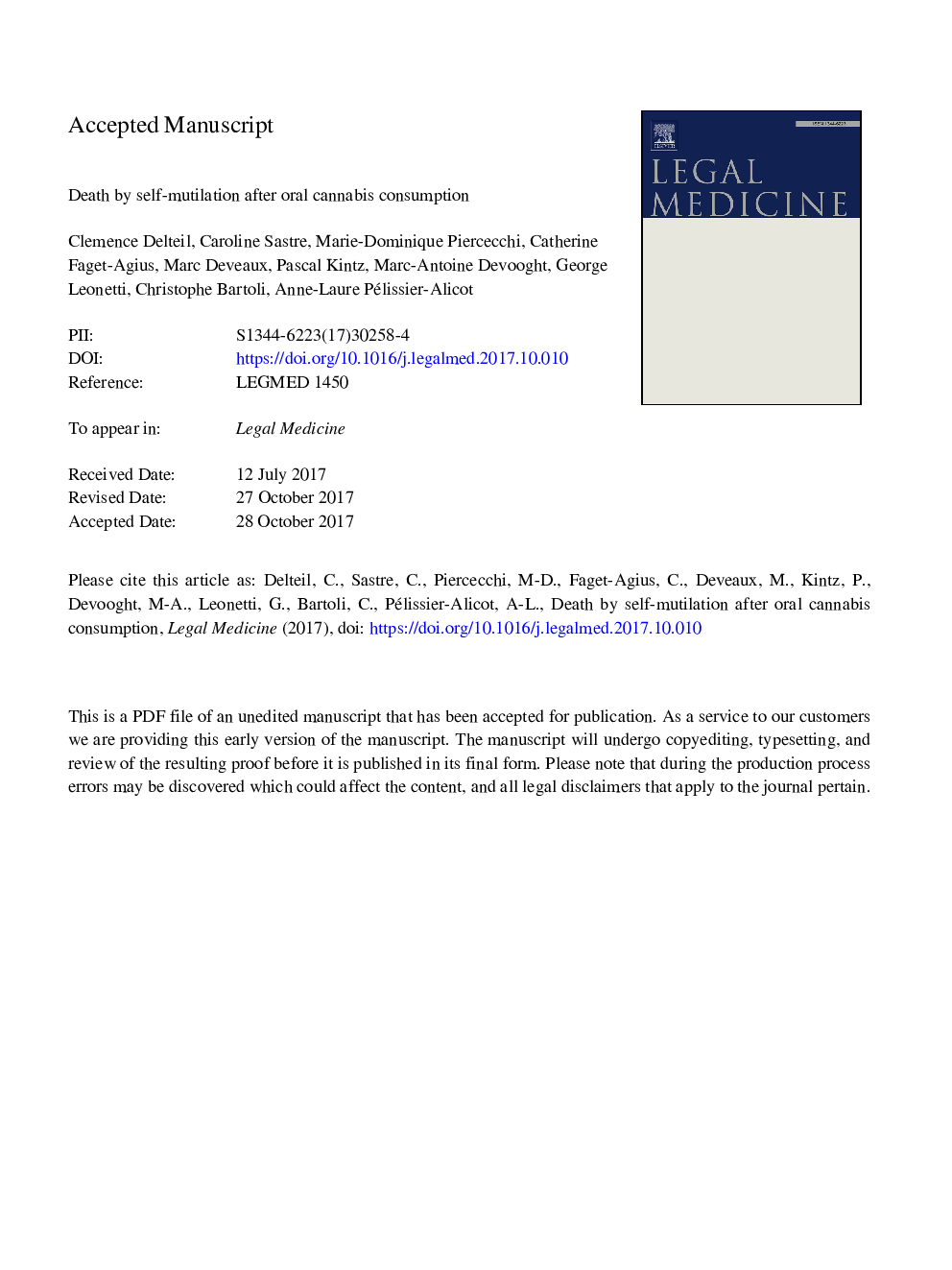| Article ID | Journal | Published Year | Pages | File Type |
|---|---|---|---|---|
| 6555336 | Legal Medicine | 2018 | 23 Pages |
Abstract
Major self-mutilation (amputation, castration, self-inflicted eye injuries) is frequently associated with psychiatric disorders and/or substance abuse. A 35-year-old man presented with behavioral disturbances of sudden onset after oral cannabis consumption and major self-mutilation (attempted amputation of the right arm, self-enucleation of both eyes and impalement) which resulted in death. During the enquiry, four fragments of a substance resembling cannabis resin were seized at the victim's home. Autopsy confirmed that death was related to hemorrhage following the mutilations. Toxicological findings showed cannabinoids in femoral blood (tetrahydrocannabinol (THC) 13.5â¯ng/mL, 11-hydroxy-tetrahydrocannabinol (11-OH-THC) 4.1â¯ng/mL, 11-nor-9-carboxy-THC (THC-COOH) 14.7â¯ng/mL, cannabidiol (CBD) 1.3â¯ng/mL, cannabinol (CBN) 0.7â¯ng/mL). Cannabinoid concentrations in hair (1.5â¯cm brown hair strand/1 segment) were consistent with concentrations measured in chronic users (THC 137â¯pg/mg, 11-OH-THC 1â¯pg/mg, CBD 9â¯pg/mg, CBN 94â¯pg/mg). Analysis of the fragments seized confirmed that this was cannabis resin with high levels of THC (31-35%). We discuss the implications of oral consumption of cannabis with a very high THC content.
Keywords
Related Topics
Physical Sciences and Engineering
Chemistry
Analytical Chemistry
Authors
Clemence Delteil, Caroline Sastre, Marie-Dominique Piercecchi, Catherine Faget-Agius, Marc Deveaux, Pascal Kintz, Marc-Antoine Devooght, George Leonetti, Christophe Bartoli, Anne-Laure Pélissier-Alicot,
